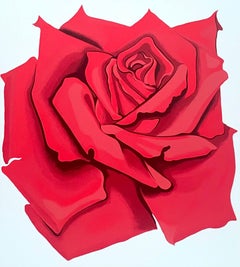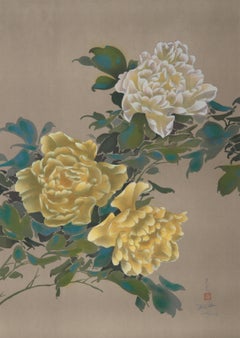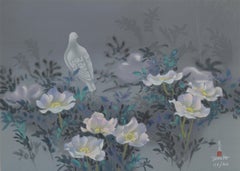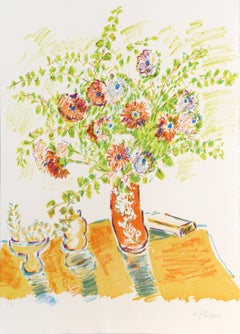Tri-State Area - Still-life Prints
1980s Pop Art Tri-State Area - Still-life Prints
Screen
21st Century and Contemporary Contemporary Tri-State Area - Still-life Prints
Archival Paper, Giclée, Archival Ink
1980s Impressionist Tri-State Area - Still-life Prints
Lithograph
1980s Impressionist Tri-State Area - Still-life Prints
Lithograph
1980s Impressionist Tri-State Area - Still-life Prints
Lithograph
21st Century and Contemporary Contemporary Tri-State Area - Still-life Prints
Giclée, Archival Paper, Archival Ink
1980s American Realist Tri-State Area - Still-life Prints
Screen
1980s Impressionist Tri-State Area - Still-life Prints
Lithograph
1980s Impressionist Tri-State Area - Still-life Prints
Lithograph
Early 20th Century Modern Tri-State Area - Still-life Prints
Lithograph
1920s Aesthetic Movement Tri-State Area - Still-life Prints
Woodcut
2010s Tri-State Area - Still-life Prints
Photographic Paper
1960s Modern Tri-State Area - Still-life Prints
Lithograph
2010s Tri-State Area - Still-life Prints
Photographic Paper
2010s Tri-State Area - Still-life Prints
Archival Paper
21st Century and Contemporary Contemporary Tri-State Area - Still-life Prints
Paper, Archival Paper, Color, Screen, Linen
2010s Tri-State Area - Still-life Prints
Archival Paper
1970s Contemporary Tri-State Area - Still-life Prints
Lithograph
2010s Tri-State Area - Still-life Prints
Photographic Paper
1980s Folk Art Tri-State Area - Still-life Prints
Lithograph
1980s Modern Tri-State Area - Still-life Prints
Lithograph
1990s Conceptual Tri-State Area - Still-life Prints
Graphite, Digital, Inkjet
1980s Folk Art Tri-State Area - Still-life Prints
Lithograph
2010s Tri-State Area - Still-life Prints
Photographic Paper
1970s Contemporary Tri-State Area - Still-life Prints
Lithograph
Mid-20th Century Modern Tri-State Area - Still-life Prints
Offset
2010s Tri-State Area - Still-life Prints
Photographic Paper
2010s Tri-State Area - Still-life Prints
Photographic Paper
2010s Tri-State Area - Still-life Prints
Photographic Paper
1960s Modern Tri-State Area - Still-life Prints
Etching
1980s Photorealist Tri-State Area - Still-life Prints
Screen
2010s Tri-State Area - Still-life Prints
Photographic Paper
1980s Photorealist Tri-State Area - Still-life Prints
Screen
1960s Modern Tri-State Area - Still-life Prints
Etching
1990s Contemporary Tri-State Area - Still-life Prints
Lithograph
2010s Tri-State Area - Still-life Prints
Photographic Paper
1980s Photorealist Tri-State Area - Still-life Prints
Screen
1960s Cubist Tri-State Area - Still-life Prints
Lithograph
1960s Contemporary Tri-State Area - Still-life Prints
Offset
1980s Pop Art Tri-State Area - Still-life Prints
Screen
1980s American Realist Tri-State Area - Still-life Prints
Screen
1960s Modern Tri-State Area - Still-life Prints
Lithograph
1980s Contemporary Tri-State Area - Still-life Prints
Lithograph
2010s Tri-State Area - Still-life Prints
Plexiglass
2010s Tri-State Area - Still-life Prints
Photographic Paper
2010s Tri-State Area - Still-life Prints
Photographic Paper
2010s Tri-State Area - Still-life Prints
Photographic Paper
1970s American Realist Tri-State Area - Still-life Prints
Color
1980s Modern Tri-State Area - Still-life Prints
Lithograph
2010s Tri-State Area - Still-life Prints
Photographic Paper
Early 2000s Tri-State Area - Still-life Prints
Mezzotint, Etching
1950s Modern Tri-State Area - Still-life Prints
Lithograph
1980s American Impressionist Tri-State Area - Still-life Prints
Lithograph
1970s Pop Art Tri-State Area - Still-life Prints
Screen
1970s Surrealist Tri-State Area - Still-life Prints
Etching, Lithograph
2010s Tri-State Area - Still-life Prints
Photographic Paper
2010s Tri-State Area - Still-life Prints
Photographic Paper
1960s Modern Tri-State Area - Still-life Prints
Etching
1980s Folk Art Tri-State Area - Still-life Prints
Lithograph
1980s Contemporary Tri-State Area - Still-life Prints
Screen





